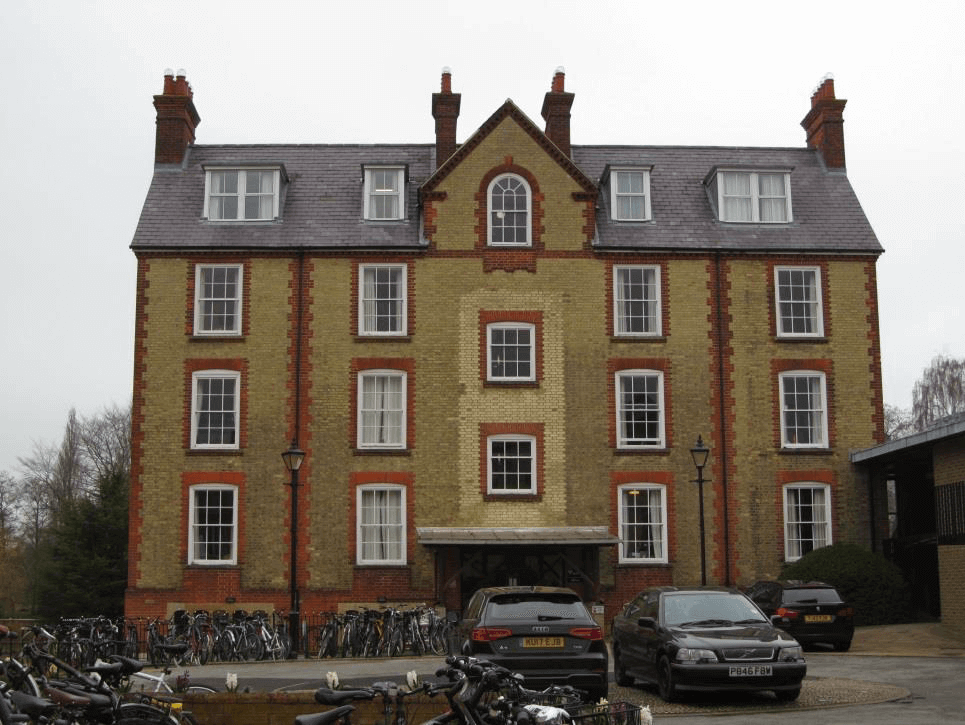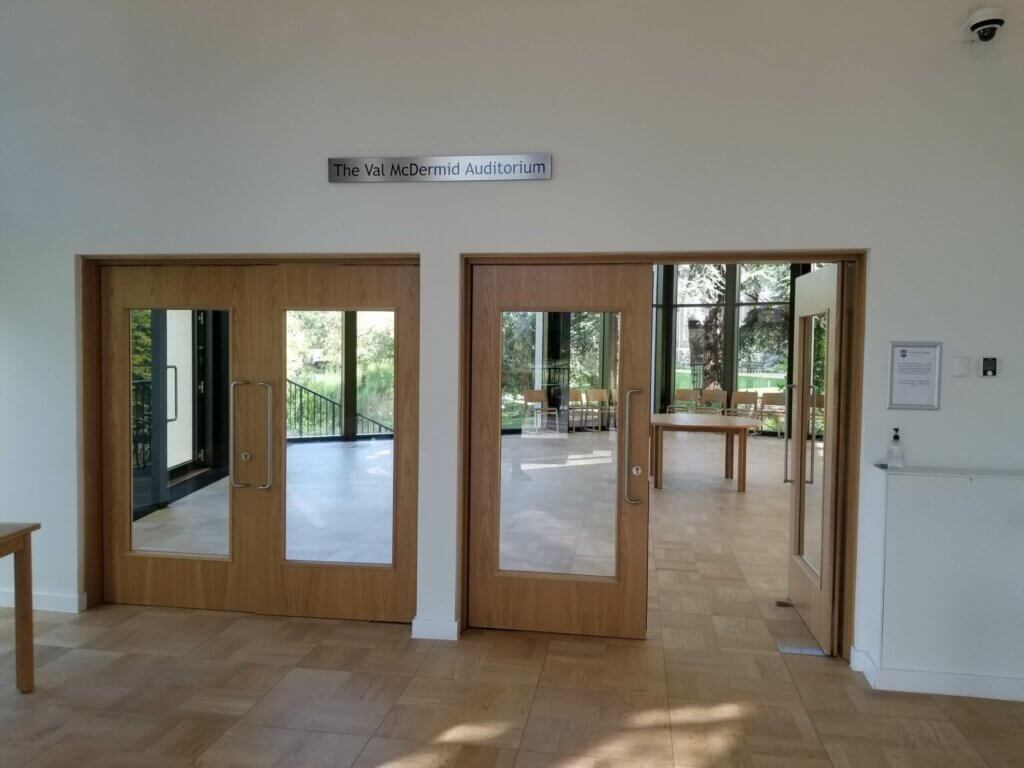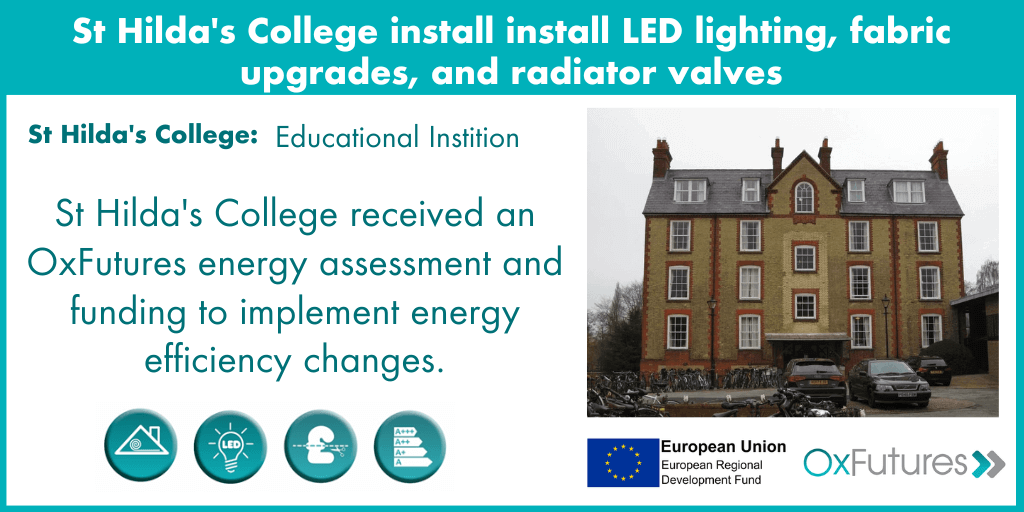St Hilda’s College
St Hilda’s College received an OxFutures grant to help install LED lighting, fabric upgrades, and radiator valves.
St Hilda’s College comprises buildings built from 1790 to 1995. The estate consists of one main site in the centre of Oxford with a number of remote student accommodation blocks in East Oxford. Heating is primarily by gas with wet radiator heating systems, however, some of the offices have electric heating; there are air-cooling units in a number of the offices and server rooms.

The Environmental Information Exchange (EiE), a not-for-profit organisation based at Oxford Brookes University, carried out a site visit in the spring of 2018. From the actions suggested by EiE, the following were implemented:
Fabric upgrades
The College had a large number of single glazed windows throughout; it was recommended that double glazing be implemented to improve the insulation in the building, reduce energy used for heating, and maintain the indoor temperature for longer. Loft insulation was added to St Hilda’s strategic plans for the buildings, prioritising buildings that are most used and where heat loss is particularly noticeable and causing discomfort.
In addition, there were uninsulated sections of pipework that required upgrading. Insulating all pipework, valves, pumps, and flanges can reduce heat loss by as much as 90% in the boiler room and payback is often within 1-2 years.
LEDs lighting upgrades
It was reported that approximately 50% of lighting was not LED so a priority was making this easy swap in St Hilda’s College buildings. LEDs are very energy efficient, reducing electricity use by up to 90% compared to other lighting.
EcoSync radiator valves
We are excited to see that EcoSync technology – another one of our OxFutures funded projects – is soon to be rolled out in 100 rooms at St Hilda’s. Through innovative technology, EcoSync reduces the energy consumption and carbon footprint of buildings by up to 40% by preventing the heating of empty rooms.You can view our article on EcoSync here.

Savings so far:
- Lighting upgrades saving around 10-15% on electricity use
- System and fabric upgrades saving around 15% on gas use
- Realistic payback periods 2-5 years
Moving forward:
What next? As St Hilda’s College moves towards best practice in energy management, there may be opportunities to engage students, staff, and site visitors on energy issues. Activities might include providing information on energy consumption and recent improvements, encouraging user input into policy and procedures and offering opportunities to actively reduce energy use.
The option of PV panels (and other renewable technologies) is also being considered.

